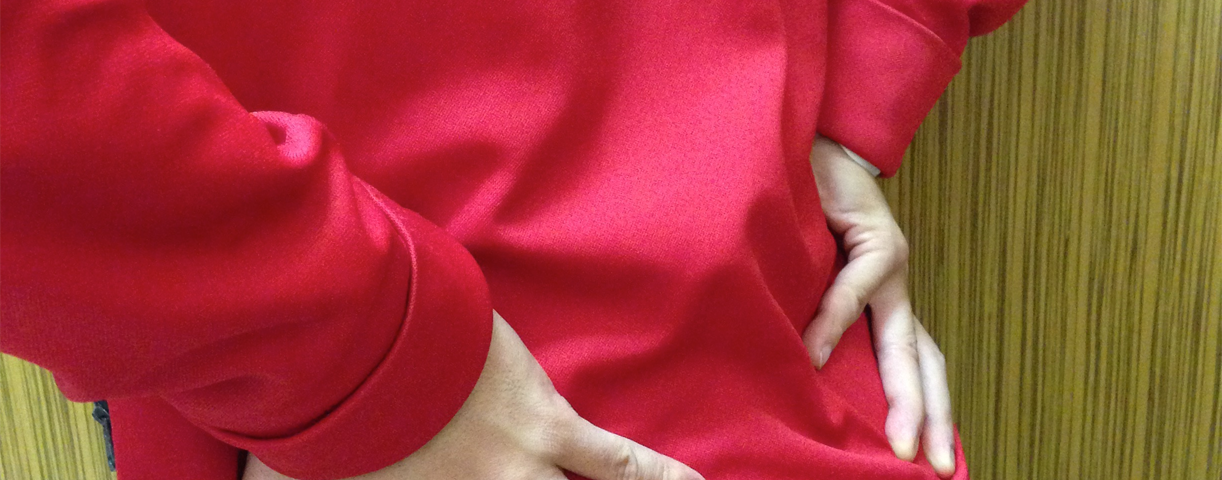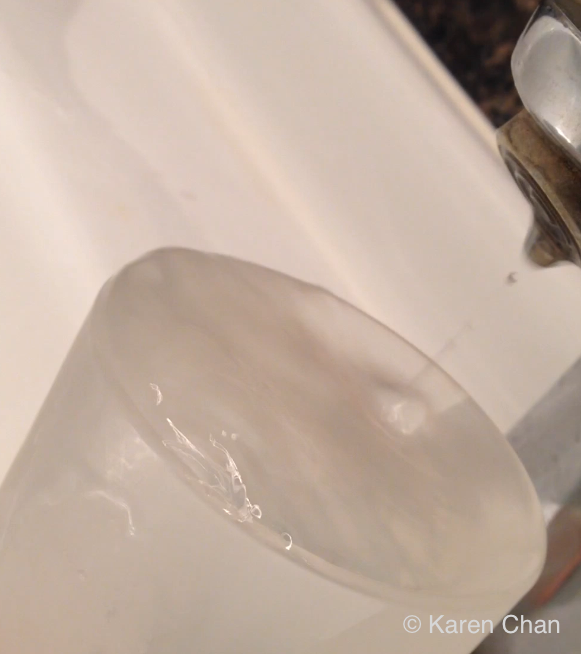講者:陳嘉賢脊醫
寒背是香港最常見的脊骨毛病之一,受影響約有三四成人 。寒背常見的原因是姿勢不佳、日常生活壞習慣所引致的疾病。隨著智能手機、平板電腦的普及,無論大人以至小孩都成為「低頭族」。在發育期間,青少年的脊骨生長會快於肌肉,故很容易出現寒背。少女乳房發育時感到害羞、缺乏自信等都可能引起寒背。加上平日經常揹過重的書包上學,做功課時坐姿不佳,使用不合高度的枱椅,課餘尤其熱衷玩手機、平板電腦,少做上身運動,都令青少年寒背的問題更趨惡化。Read more

講者:陳嘉賢脊醫
寒背是香港最常見的脊骨毛病之一,受影響約有三四成人 。寒背常見的原因是姿勢不佳、日常生活壞習慣所引致的疾病。隨著智能手機、平板電腦的普及,無論大人以至小孩都成為「低頭族」。在發育期間,青少年的脊骨生長會快於肌肉,故很容易出現寒背。少女乳房發育時感到害羞、缺乏自信等都可能引起寒背。加上平日經常揹過重的書包上學,做功課時坐姿不佳,使用不合高度的枱椅,課餘尤其熱衷玩手機、平板電腦,少做上身運動,都令青少年寒背的問題更趨惡化。Read more

The Case
Yesterday, I picked up a pen from the floor and sprained my back. My back was so sore I decided to limp to my bed and rest. The next morning, I couldn’t get out of bed!” The patient comes to my clinic with an antalgic lean, severe pain and sometimes needing to lie down on the treatment table for a while before treatment.
Did picking up a pen from the floor cause the low back pain? The word ‘triggered’ the lower back pain would be a better description. In most cases, there has been previous consistent micro-trauma to the lower back prior to this incident. However, the trauma has yet to affect the pain sensitive nerve, so pain symptoms are kept at bay.
 Say for example, water dripping into a cup. The water being the micro-trauma, the cup being your body, and the overflowing water from the cup is the pain injury. When the water drips into the cup, the pain is not yet felt. When the cup is nearly full, only one more drop is needed to have it overflow. This one-drop may be picking up a pen from the floor or sneezing in the slouched position.
Say for example, water dripping into a cup. The water being the micro-trauma, the cup being your body, and the overflowing water from the cup is the pain injury. When the water drips into the cup, the pain is not yet felt. When the cup is nearly full, only one more drop is needed to have it overflow. This one-drop may be picking up a pen from the floor or sneezing in the slouched position.
When such a patient enters my clinic, a medical history and orthopedic tests are conducted to figure out the possible cause to the symptoms, be it a lumbar disc bulge, a sprained joint/ligament or muscles in spasm, in addition to ruling out red flags. If x-rays are needed, I may refer for it. Structural observation and chiropractic examinations are then conducted to assist with chiropractic treatment.
What is Chiropractic?
The term “chiropractic” derived from Greek roots to mean, “done by hand” (Palmer, 1967) and was developed by D.D. Palmer in 1895 (Palmer, 1910). However, manual therapy/spinal adjustments have been mentioned since Hippocrates and the ancient Greek physicians (Withington, 1928).
Chiropractic treatment utilizes manual therapy, which includes chiropractic adjustments to the spine and joints, joint mobilization and soft tissue techniques. Orthotics may also be prescribed and exercise programs tailored for the patient. There will also be patient education on ergonomics and posture, nutrition, use of health supplements, and other lifestyle modifications. Chiropractic treatment uses clinical interventions that support the body’s natural ability to heal itself without the use of drugs and surgery (WHO, 2005; WFC, 2012; HKCA, 2014).
According to the World Health Organization (2005) and the World Federation of Chiropractic (2009, 2012), Chiropractic is defined as a health profession concerned with the diagnosis, treatment, and prevention of disorders of the musculoskeletal system and the effects of these disorders on the nervous system and general health.
In most cases, the low back pain patient recovers very well with chiropractic care. The results from a study by Goertz et al. (2013) suggest chiropractic manipulative therapy in conjunction with standard medical care offers a significant advantage for decreasing pain and improving physical functioning when compared with only standard medical care, for men and women between 18 and 35 years of age with acute low back pain.
Research by Magna et al. (1993) supported the effectiveness and cost-effectiveness of chiropractic treatment for low back pain. “Workers compensation studies report that injured workers with the same specific diagnosis of low back pain returned to work much sooner when treated by chiropractors then by physicians”. In addition, empirical evidence showed patients were very satisfied with chiropractic management of low back pain. The Meade study (1990, 1995) mentioned “patients with low back pain in whom manipulation is not contraindicated, chiropractic most certainly confers worthwhile, long term benefit in comparison with hospital out patients management”.
What do I look for?
The question then is how do we decrease the amount of micro-trauma to our bodies to prevent this lower back injury from being a ticking time-bomb, as mentioned in the above case?
Firstly, I will search for biomechanical imbalances in the body, which may induce micro-trauma to the lower back, here are some examples:
What to look for to prevent lower back pain?
Then, I will examine the patient’s daily lives, which may also cause micro-trauma to the lower back, these may include:
As each person is unique, micro-traumas can also be unique to each individual.
I would like you to start pondering on micro-traumas in your daily life, which may need to be adjusted. Here is a new year’s resolution for you.
Happy Lunar New Year of the Monkey!
References:
Goertz, .C. CM. et al. (2013). Adding chiropractic manipulative therapy to standard medical care for patients with acute low back pain: Results of a pragmatic randomized comparative effectiveness study. Spine; 38 (8); 627-34.
Hong Kong Chiropractors Association (2014) [Online]. Available at: http://www.hkca.org/eng-hiwic.jsp
Magna, P. et al. (1993). The Effectiveness and Cost-Effectiveness of Chiropractic Management of Low Back Pain. Funded by the Ontario Ministry of Health; Canada. Kenilworth Publishing, Richmond Hill.
Meade, T. W. et al.(1990). Low back pain of mechanical origin; randomized comparison of chiropractic and hospital outpatient. British Medical Journal, 300; 1431-1437.
Meade, T. W. et al. (1995). Randomised comparison of chiropractic and hospital outpatient management for low back pain: results from extended follow up. British Medical Journal, 311(7001); 349-51.
Palmer, D. D. (1910). The chiropractor’s adjustor. Portland, OR, Portland Printing House.
Palmer, D.D. (1967). Three generations: a history of chiropractic. Davenport, Iowa, Palmer College of Chiropractic (29).
Withington, B,T. (1928). Hippocrates, with an English translation. Cambridge, MA, Harvard University Press.
World Federation of Chiropractic (2009) [Online]. Available at: https://www.wfc.org/website/index.php?option=com_content&view=article&id=90&Itemid=110&lang=en
World Federation of Chiropractic. (2012).The current status of the chiropractic profession. Report to the World Health Organization from the World Federation of Chiropractic [Online]. Available at: https://www.wfc.org/website/images/wfc/WHO_Submission-Final_Jan2013.pdf
World Health Organization Guidelines on basic training and safety in chiropractic (2005) [Online]. WHO Geneva. Available at: http://www.who.int/medicines/areas/traditional/Chiro-Guidelines.pdf
